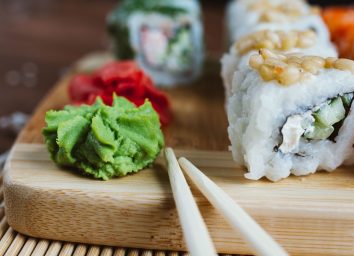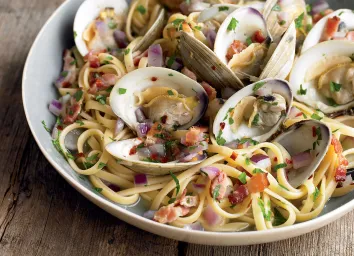Is Sushi Healthy? These Are the Best Rolls & Sashimi To Order
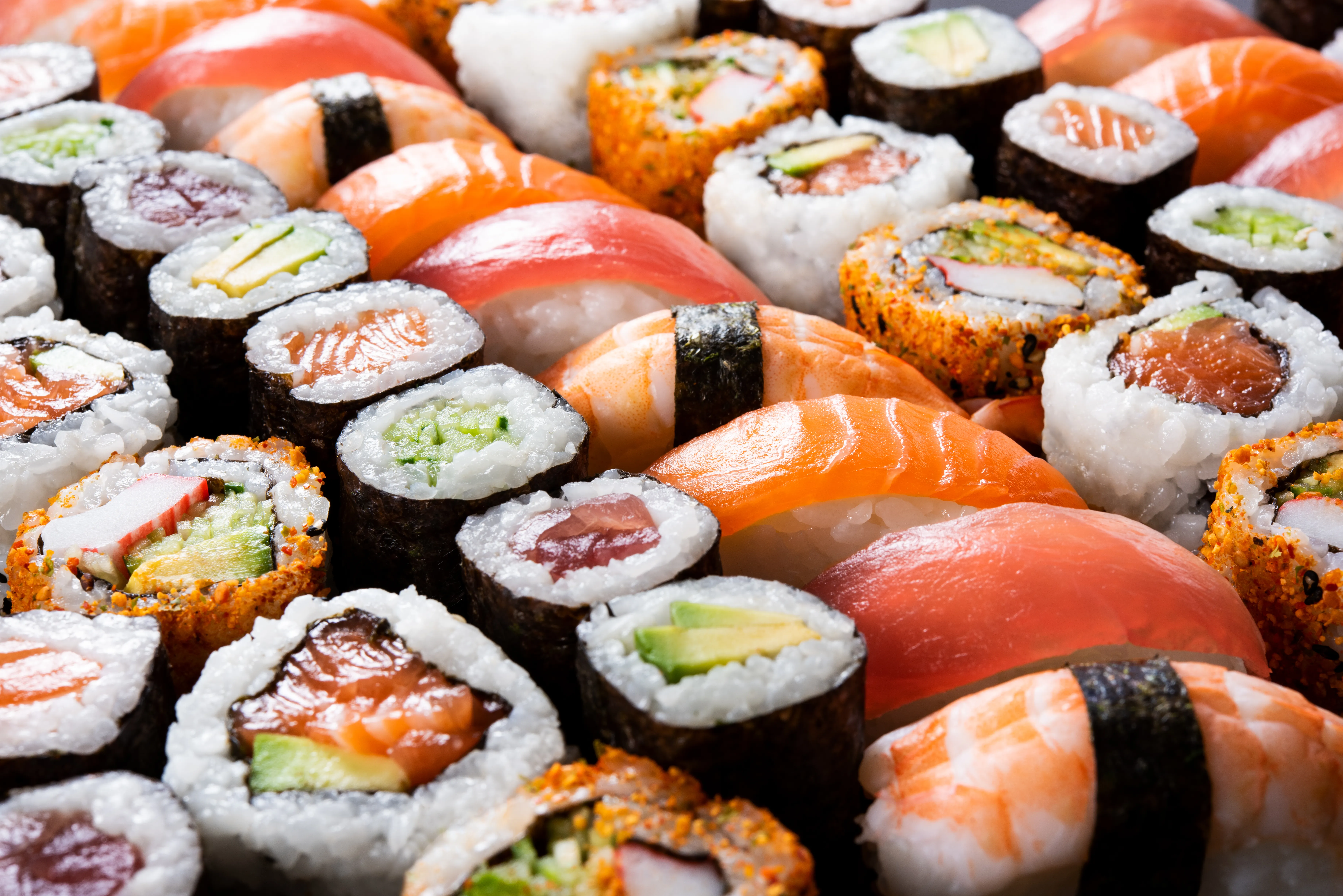
Comprised of simple fresh ingredients, quick to prepare, and always elegantly plated, sushi is perhaps one of the chicest dining options available that seldom fails to impress. These days, even those who are not fans of raw fish or who follow a strictly plant-based diet can find something to enjoy on most sushi restaurant menus. While this traditional Japanese fare may bedazzle any friends, work colleagues, or your date, if you are making an effort to be more self-aware with regard to diet, you may wonder, “is sushi healthy?” before ordering your next spicy tuna roll.
Yes, most maki rolls and sashimi orders minimally include some combination of lean protein, seaweed, and rice, among other ingredients—all of which each respectively provide some form of health benefit. But sushi orders can be a double-edged sword, as the ingredients and preparation techniques used in some cases can yield an excess of sodium and saturated fats. Also, small portions can make your eyes bigger than your stomach, making it difficult to eat in moderation.
With all of this in mind, we here at Eat This, Not That were eager to find out, is sushi actually healthy? To help us answer this burning question, we consulted a few expert dietitians, who also provided tips to help you place a healthy yet satisfying sushi order. Read on to find out if your favorite kind of sushi is part of a dietitian-approved order—and for more healthy eating advice, be sure to check out Which Type of Rice Is the Healthiest?
What are some benefits of eating sushi?
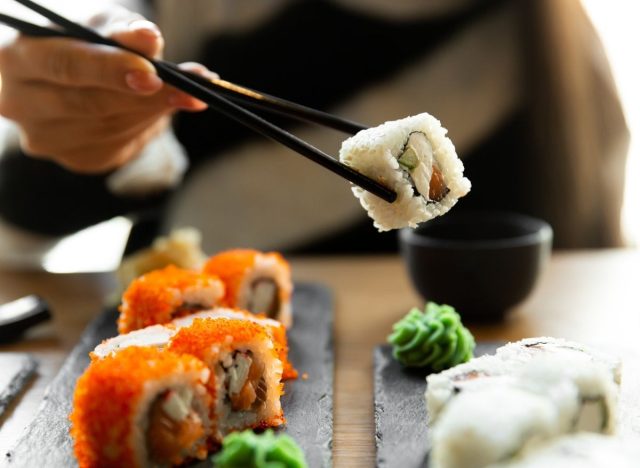
Eating sushi can benefit your body in several ways because it “typically includes nutrient-rich ingredients such as fish, seafood, vegetables, and rice, which can provide vitamins, minerals, and fiber to your diet,” explains Trista Best, MPH, RD, LD, a registered dietitian at Balance One Supplements. It’s also “low in saturated fats, which can help reduce the risk of certain chronic diseases, such as heart disease and diabetes,” she adds.
Here are four benefits of including sushi in a healthy diet.
Sushi can be a well-balanced meal.
Made with protein-rich fish, healthy fats like avocado, and fibrous veggies, sushi can be a nutritionally well-balanced meal. “Sushi can be a very healthful and nutritious food if prepared correctly, meaning keeping it simple with fish and vegetables,” says Amy Goodson, MS, RD, CSSD, LD, author of The Sports Nutrition Playbook and member of our Medical Expert Board. “Traditional sushi contains protein, carbohydrates, and some healthy fats, which all work in harmony together to help you feel fuller and more satisfied, and stabilize blood sugars.”
“Fish is a high-quality protein source, and fatty fish specifically (salmon and tuna) are rich in the omega-3 fatty acids that our brains and bodies need,” Goodson elaborates. “Plus, sushi is typically wrapped in seaweed and stuffed with vegetables such as carrots, cucumbers, and avocado.”
You’ll get closer to meeting your recommended weekly fish intake.
“Since seafood is the prominent ingredient in most sushi meals, it’s a fabulous way to meet the goal of consuming 8 ounces of seafood per week,” adds Lauren Manaker, MS, RDN, author of The First Time Mom’s Pregnancy Cookbook and Fueling Male Fertility. “Research shows the heart-healthy omega-3 fats found in seafood can reduce the risk of heart disease, depression, dementia, and arthritis, and can also improve overall mood. Recommendations support eating 250–500mg of omega-3 fats per day, which can be found in some commonly served menu items such as salmon, mackerel, crab, and tuna.”
The fish used in sushi is rich in health-supporting micronutrients.
“The omega-3 fatty acids in fatty fish support brain health, cell development, and may even reduce the risk of chronic disease and some cancers,” explains Goodson. “Selenium, which is found in high amounts in yellowfin tuna, is an essential mineral and antioxidant that plays a role in thyroid function and metabolism.”
Goodson also mentions that along with being an excellent source of protein and omega-3 fatty acids, fatty fish like salmon and tuna also contain selenium and are “one of the few food sources of vitamin D.”
When eaten in moderation, sushi can support your weight loss goals.
“Sushi can be a healthy food option for those trying to manage their weight, as it tends to be low in calories and high in protein and fiber,” Best says. “Sushi rolls that contain vegetables like avocado, cucumber, and seaweed can be rich in antioxidants, which help protect your cells from damage.”
What factors can contribute to an unhealthy sushi order?
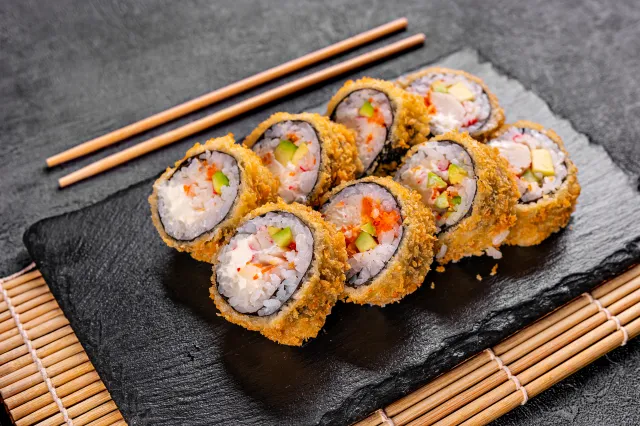
“The healthiness of sushi can depend on the ingredients and preparation methods used,” says Best.
The following three factors can make your sushi order less healthy.
- High-calorie ingredients: “Some sushi rolls are made with high-calorie ingredients, such as fried tempura batter, cream cheese, or mayonnaise-based sauces. These rolls may be delicious, but they are also high in calories, unhealthy fats, [and refined carbohydrates],” says Best.
- High-sodium ingredients: “Pickled vegetables and the soy sauce that is traditionally served on the side can pack a serious sodium punch,” Goodson notes. “This may not be the best option for those who are concerned about high blood pressure.”
- Certain fish with high levels of mercury: Although fish provides plenty of health benefits, eating some species can increase your exposure to mercury, which certain people should be mindful of. “Some types of fish, such as tuna, can contain high levels of mercury—which can be harmful in large quantities, especially for pregnant women and young children,” says Best.
Are these 7 popular sushi & sashimi orders actually healthy? Here’s what RDs think.
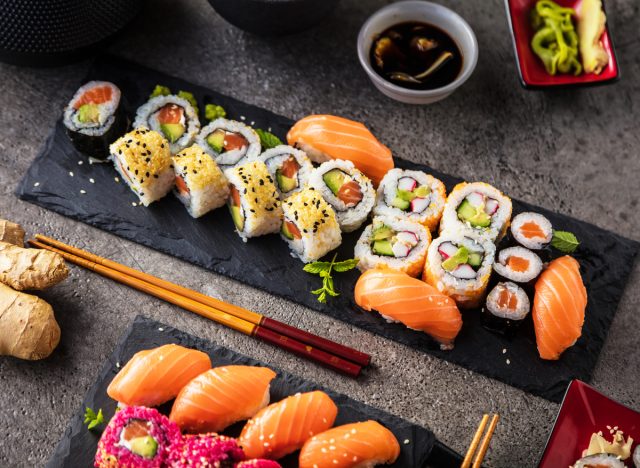
1. California Roll
“This roll can be a healthy option as it includes nutrient-rich ingredients such as avocado, which is a good source of healthy fats, fiber, and vitamins, and cucumber, which is low in calories and high in water content. The crabmeat used in California rolls is also a good source of protein and minerals,” says Best.
According to Goodson, California rolls can also “provide you with a balance of carbs, protein, and fats.”
How to make this order more healthy: “Choose a California roll with fresh, high-quality ingredients and avoid rolls with added sugars, mayonnaise-based sauces, and imitation crabmeat, it can be a healthy food choice,” suggests Best. “It’s also important to keep portion sizes in mind and eat California rolls in moderation as part of a balanced diet.”
“If you want to amp up the protein in this roll, consider adding an appetizer or side of edamame,” Goodson advises.
2. Salmon Skin Roll
Goodson points out that “this roll features the salmon skin, which contains the highest concentration of omega-3 fatty acids in the fish and provides vitamins B and D as well as minerals like niacin and phosphorus.”
How to make this order more healthy: “Opt for salmon skin that has been baked or seared instead of fried,” says Goodson.
3. Salmon & Avocado Roll
“This roll is truly a healthy fat powerhouse between the salmon and the avocado,” notes Goodson.
“Salmon is a rich source of omega-3 fatty acids, which can help reduce inflammation and improve heart health,” says Best. “It is also a good source of protein, vitamin D, and several other vitamins and minerals. Avocado is an excellent source of healthy fats, including monounsaturated and polyunsaturated fats, which can help improve heart health and lower bad cholesterol levels. It is also a good source of fiber, vitamins, and minerals.”
How to make this order more healthy: “Instead of white rice, choose brown rice for your sushi roll,” advises Best. “Brown rice is a whole grain and contains more fiber, vitamins, and minerals than white rice.”
“Ask for less rice in your sushi roll to reduce the overall calorie content,” she adds. “A smaller amount of rice can also increase the proportion of salmon and avocado in the roll, which are both nutrient-rich ingredients.”
4. Rainbow Roll
“This roll features multiple types of fish, and packs on a whooping 21 grams of protein and 6 grams of fiber,” explains Goodson.
How to make this order more healthy: “The fatty fish and avocado provide plenty of healthy fats. However, those who are looking to lose weight may want to consume this in moderation,” she says.
5. Crunchy Spicy Tuna Roll
“This roll features spicy tuna served on top of a crispy sesame rice and drizzled with black pepper soy sauce,” says Goodson. “The fried sesame rice and soy sauce add on additional saturated fats and sodium.”
“The crunchy spicy tuna roll may not be the healthiest option, as it often contains ingredients that are high in calories, unhealthy fats, and sodium,” says Best. “The spicy tuna filling typically includes mayonnaise, which can be high in calories and unhealthy fats. Additionally, the ‘crunchy’ aspect of the roll often comes from tempura batter, which is deep-fried and can be high in calories and unhealthy fats.
How to make this order more healthy: “Opt for the black pepper soy sauce on the side, and use sparingly to cut back on sodium,” Goodson advises.
“Request that the sushi chef use less spicy mayonnaise in the roll,” adds Best. “You can also ask for a low-fat or low-calorie mayonnaise-based sauce instead, [or even] request that the roll be made without the tempura coating. This will reduce the calorie and fat content of the roll.”
“[Also,] ask for the roll to be made with extra vegetables, such as cucumber, avocado, or carrots,” says Best. “This will increase the fiber content and add extra vitamins and minerals.”
6. Yellowtail Sashimi
“Coming in at only 70 calories a piece, this sashimi is an excellent low-calorie option that still provides you with heart healthy omega-3’s and high-quality protein,” says Goodson.
How to make this order more healthy: “Try ordering a side of steamed vegetables or a side of seaweed to provide extra vitamins and minerals,” Goodson suggests.
7. Unagi Sashimi
“Eel provides high-quality protein and many vitamins and minerals, including vitamins A, B12 and D, and phosphorus and zinc,” Goodson explains.
How to make this order more healthy: “Ditch the soy sauce that is traditionally served on the side and opt for brown rice or a side of vegetables to amp up the fiber,” says Goodson.
Tips & takeaways for an all-around healthy sushi order
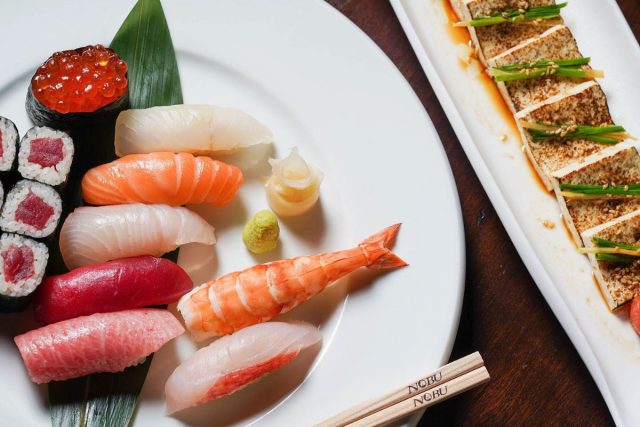
“As with any meal, balancing your plate is the goal with attention to produce, protein, carbohydrates, and healthy fats,” Lauren Harris-Pincus, MS, RDN, founder of NutritionStarringYOU.com and author of The Everything Easy Pre-Diabetes Cookbook, explains.
“Overall, if you choose sushi with fresh ingredients, limit high-calorie and high-sodium options—and eat in moderation—it can be a healthy food choice,” Best adds.
Here are a few tips to make your sushi order healthy:
- Start with a salad. “Since sushi meals are not typically veggie-focused, I recommend starting with a salad or seaweed salad for some antioxidants and fiber, then choose three or four pieces of sashimi for quality protein and an omega-3 boost,” Harris-Pincus suggests. Goodson also recommends adding a “side salad or edamame appetizer to boost the fiber and nutrient profile of the overall meal.”
- Order rolls with both fish and veggies. “Opt for a roll that contains salmon, shrimp, or tuna to provide protein and omega-3 fatty acids,” advises Goodson. “Choose a roll that includes a mix of vegetables such as carrots, cucumber, cabbage, and/or avocado.”
- Watch out for high-calorie and high-sodium ingredients. “Choose sushi rolls that are flavored with low-fat and low-sodium options sauces such as ponzu, vinegar, or citrus-based dressings. Avoid rolls that contain mayonnaise-based sauces or dressings as they are high in calories and fat,” says Best, noting that fried or battered ingredients, such as tempura, should also be avoided when possible.
- Be mindful of your portion sizes. Though h’ordeuvre-sized sushi portions can make ordering copious amounts of maki rolls and sashimi a temptation that’s hard to resist, remember that even healthy foods are best consumed in moderation. “Order a reasonable amount of sushi rolls based on your hunger level, and consider sharing with friends or family,” Best advises. Harris-Pincus’ pro-tip to help with portion control when at your fave sushi spot? “I always ask my standard rolls to be cut into eight pieces instead of the typical six,” she says. “It feels like more food and the bites are easier to manage!”

